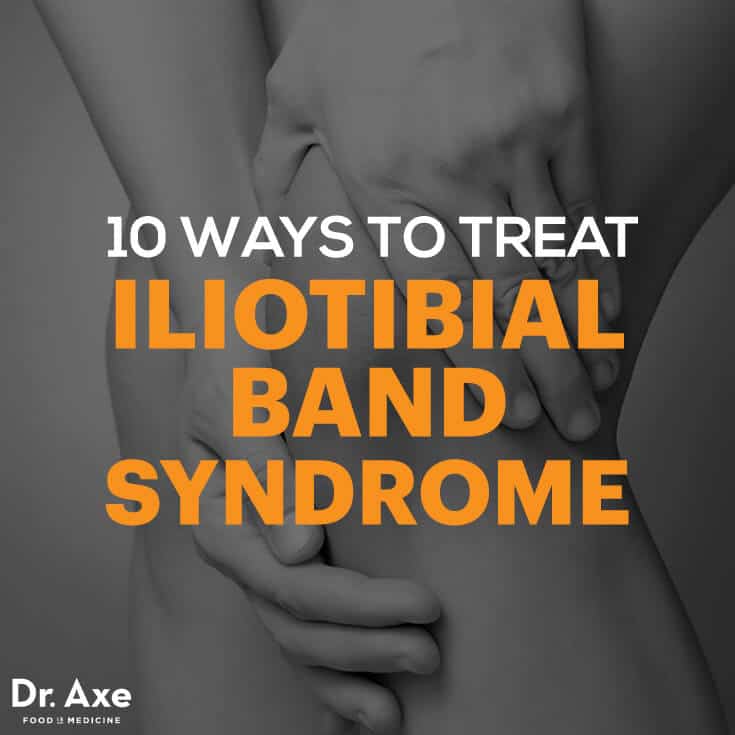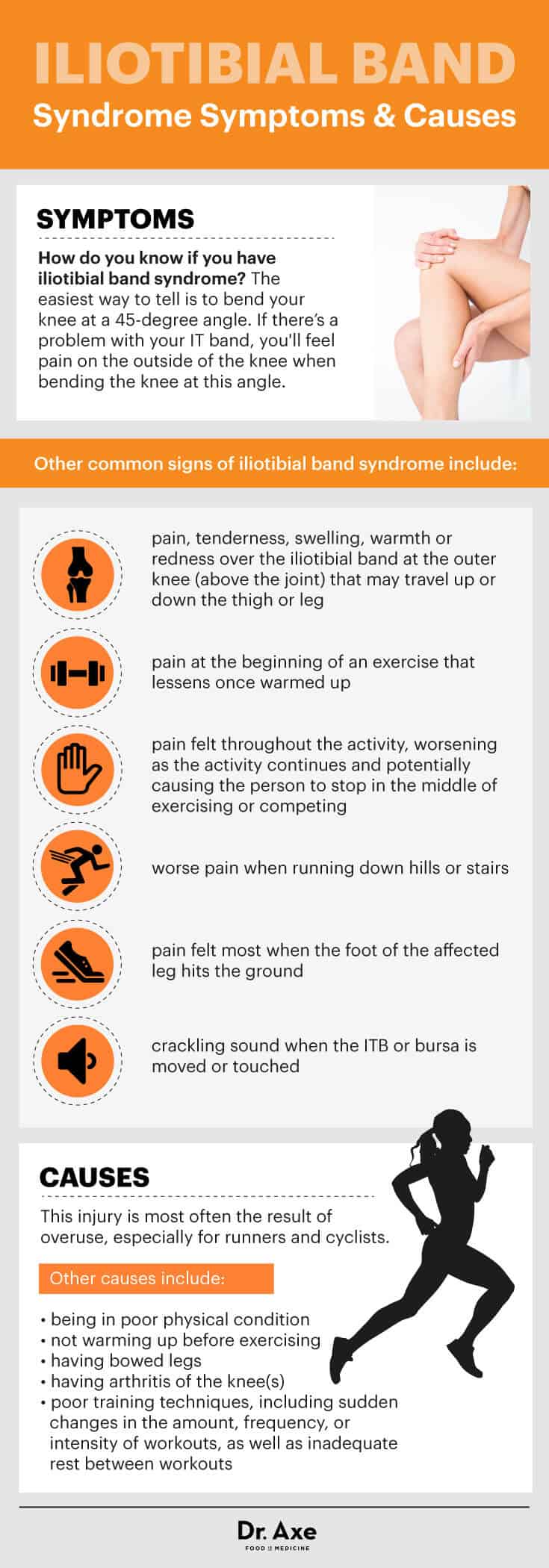This Dr. Axe content is medically reviewed or fact checked to ensure factually accurate information.
With strict editorial sourcing guidelines, we only link to academic research institutions, reputable media sites and, when research is available, medically peer-reviewed studies. Note that the numbers in parentheses (1, 2, etc.) are clickable links to these studies.
The information in our articles is NOT intended to replace a one-on-one relationship with a qualified health care professional and is not intended as medical advice.
This article is based on scientific evidence, written by experts and fact checked by our trained editorial staff. Note that the numbers in parentheses (1, 2, etc.) are clickable links to medically peer-reviewed studies.
Our team includes licensed nutritionists and dietitians, certified health education specialists, as well as certified strength and conditioning specialists, personal trainers and corrective exercise specialists. Our team aims to be not only thorough with its research, but also objective and unbiased.
The information in our articles is NOT intended to replace a one-on-one relationship with a qualified health care professional and is not intended as medical advice.
Iliotibial Band Syndrome: the Cause of Your Knee Pain?
November 27, 2017

Why should you read an article about iliotibial band syndrome? Well, if you’re a runner, the chances of you having iliotibial band syndrome at some point is quite high since it’s the second most common running injury. (1)
If you’re not a runner but regularly engage in physical activity that involves repetitive knee motion, then you’re also at risk. What if you never engage in any athletic activities? If you currently have knee pain or lower back pain, it could be caused by your IT band not working optimally.
You definitely want to avoid iliotibial band syndrome (ITBS) since it can keep a you on the sidelines for weeks or even longer. Get to know the signs and natural ways to treat and prevent this painful condition today — like stretching your IT bands and glutes!
What Is Iliotibial Band Syndrome?
The iliotibial band (ITB or IT band) is a thick band of fascia that runs down the outside of the thigh from the pelvic bone to just below your knee on the tibia (shin) bone. Where the ITB passes the knee, there is a water-filled sac called a bursa. The bursa functions like a water balloon to reduce friction and wear of the ITB against the bony bump of the outer knee. Iliotibial band syndrome takes place when the ITB becomes swollen and irritated from rubbing against the bone on the outside of your knee.
The ITB’s primary function is to control and decelerate the adduction (inward movement) of the thigh when the heel strikes the ground, as during running. The ITB crosses two joints, the hip and the knee joints, so it can be involved in problems in both areas. The ITB is most commonly implicated in knee pain issues but is also involved in the development of some forms of “snapping hip” and in trochanteric bursitis.
Typically, iliotibial band syndrome results from an overuse injury, seen most commonly in long-distance runners and other athletes whose sports require a great degree of knee bending. The condition is also commonly seen in cyclists, soccer and tennis players, skiers, and weightlifters (especially those doing power-lifting moves, such as squats).
Natural Treatments & Prevention of Iliotibial Band Syndrome
Surgery is rarely necessary to treat iliotibial band syndrome. As with many acute and chronic inflammatory conditions, surgery is considered the last resort. Plus, there are many things you can do yourself to heal and prevent iliotibial band syndrome.
1. Walk First
Before engaging in running, biking or another knee-bending exercise, walk a quarter- to a half-mile. This helps warm up your whole body, especially your legs, for more strenuous exercise. (2) This is one of the best running tips for beginners and for anyone dealing with ITB pain.
2. Rest
One of the best and easiest things you can do for iliotibial band syndrome once you have it is to rest. The condition typically improves when the activity that provokes pain is avoided. If you feel pain on the outside of your knee, you should take a few days off from your usual exercise and decrease your mileage/length of workout when you return.
In the majority of runners, resting immediately prevents pain from returning. If you don’t give yourself a break from running, iliotibial band syndrome can become chronic.
3. Stretching & Strengthening
Consistently stretching the iliotibial band, hamstrings, quadriceps and glutes is one of the best things you can do to prevent and treat iliotibial band syndrome.
One study in the Journal of Chiropractic Medicine even showed that a runner’s low back and sacroiliac pain seemed to originate from a dysfunctional iliotibial band. This case illustrates how important it is to consider iliotibial band tightness as a possible cause of low-back and sacroiliac pain and that proper management may need to include stretching of the iliotibial band. (3)
Strengthening the hip abductor muscles has also been shown to be helpful for ITBS. A study in the Clinical Journal of Sport Medicine showed that long-distance runners with ITBS have weaker hip abduction strength in the affected leg compared with their unaffected leg and unaffected long-distance runners. Additionally, symptom improvement with a successful return to the preinjury training program parallels improvement in hip abductor strength. (4)
4. Running Modification & Gait Analysis
Try to run on flat surfaces, avoiding concrete surfaces as much as possible. When running on a track, change directions repeatedly. You can also try wearing a bandage or knee sleeve to keep the bursa and ITB warm while you exercise.
Modification of a runner’s actual way of running — aka his or her gait — has also proved to be very helpful for iliotibial band syndrome. Gait analysis is a common and very helpful way to alleviate ITB issues.
One study of a 36-year-old female runner with a diagnosis of left knee ITBS, whose pain prevented her from running greater than three miles for three months, showed how a change to her gait directly led to her recovery from iliotibial band syndrome. This subject’s foot strike and vertical displacement were evaluated and improved during the course of study.
These changes to her gait led to complete recovery from knee pain six weeks later. She was able to run up to seven miles with comfort and an improved feeling of strength by implementing her new gait and running form. (5)
5. Ice & Heat Therapy
Both cold and hot self-care can help your iliotibial band heal. Use a heating pad or hot water bottle on the painful area to warm the area up before activity. Then, use ice following activity to decrease the possibility of pain. (6) You can apply ice to the painful area for 15 minutes every two to three hours. Do not apply ice directly to your skin.

6. Physical Therapy
Physical therapy is routinely prescribed for iliotibial band syndrome. The goals of physical therapy include targeted increases in flexibility and strength associated with some of the intrinsic factors contributing to the syndrome. Stretching the ITB, hamstrings and the quadriceps is crucial. Strengthening the hip abductors is also important. (7)
One treatment that some physical therapists can perform for IT band pain relief is dry needling, which has been shown to help.
7. Rolfing
Rolfing is known for its ability to improve athletic ability. Rolfing for athletes focuses on changing their limiting physical behavior and educates them on how to use gravity in their favor. It can help athletes of all degrees gain improved physical ability by improving posture, lengthening constricted muscle fibers, relaxing areas of tension and improving ease of motion.
By helping the muscles operate more efficiently, rolfing increases the body’s ability to conserve energy and develop more economical and refined patterns of movement for athletic activities, as well as everyday activities — and it helps prevent your IT bands from getting overowrked. (8)
8. Foam Rolling
Foam rolling is a commonly prescribed remedy for iliotibial band syndrome. However, it can actually cause more harm than good if you’re trying to work directly on an ITB that’s already inflamed. If you do this, you can actually increase inflammation of the ITB.
Instead, work on the primary muscles that attach to the IT band first, especially the gluteus maximus (the largest muscle in the buttocks) and the tensor fasciae latae (a muscle that runs along the outer edge of the hip).
9. Check Your Footwear
Always make sure your shoes aren’t worn along the outside of the sole. If they are, you need to replace them stat. Worn-out sneakers definitely negatively affect you if you’re a runner, and they affect you negatively even if you just use your shoes to walk from place to place.
10. Specific Changes for Cyclists & Runners
Bicyclists can often benefit from a custom fit of their bikes. More specifically, lowering the seat slightly is often enough to avoid critical impingement of the iliotibial band against the femur, which occurs at about a 30-degree angle of knee flexion (bending). Adjusting the foot position on the cycle pedals may be helpful as well.
Runners can benefit from avoiding unidirectional running on banked surfaces (like an indoor track, beach or graded roadside) and avoiding intervals, track workouts and hills. (9)
Symptoms of Iliotibial Band Syndrome
How do you know if you have iliotibial band syndrome? The easiest way to tell if you have ITBS is to bend your knee at a 45-degree angle. If there is a problem with your IT band, then you’ll feel pain on the outside of the knee when bending the knee at this angle.
Doctors can also perform an MRI to confirm that you have iliotibial band syndrome. Typically, X-rays show negative results while an MRI can reveal if there is a thickening of the iliotibial band, which results from inflammation. (10)
Other common signs of iliotibial band syndrome:
- Pain, tenderness, swelling, warmth or redness over the iliotibial band at the outer knee (above the joint) that may travel up or down the thigh or leg.
- Initially, pain at the beginning of an exercise that lessens once warmed up.
- Eventually, pain that is felt throughout the activity, worsening as the activity continues and potentially causing the person to stop in the middle of exercising or competing.
- Pain that is worse when running down hills or stairs.
- Pain that is felt most when the foot of the affected leg hits the ground.
- Possibly, a crackling sound when the ITB or bursa is moved or touched.
Causes of Iliotibial Band Syndrome
This injury is most often the result of overuse, especially for runners and cyclists. The longer distance you run or cycle, the more likely you are to experience this syndrome. For these two physical activities, bending the knee over and over again can create irritation and swelling of the iliotibial band.
Other causes include (11):
- Being in poor physical condition, including a lack of strength and flexibility, especially a tight iliotibial band
- Not warming up before exercising
- Having bowed legs
- Having arthritis of the knee(s)
- Poor training techniques, including sudden changes in the amount, frequency or intensity of workouts, as well as inadequate rest between workouts

Complications & Precautions of Iliotibial Band Syndrome
Iliotibal band syndrome is typically curable within six weeks if treated appropriately with conservative treatment and resting of the affected area. Without appropriate treatment and an adequate amount of time for rest, prolonged healing time is required for iliotibial band syndrome.
In additional, having a chronically inflamed ITB and bursa can cause persistent pain with activity that may progress to constant pain. Recurrence of symptoms is likely if activity is resumed too soon or workouts are not modified appropriately once resumed after a period of rest.
ITBS Action steps
The biggest takeaway is listening to your body, particularly when you regularly engage in running, cycling and similar exercises. If you feel pain, the first step is to rest and find the cause of the issue. From there, you must ease back into exercise when your body tells you’re ready.
Of course, the best treatment is prevention. If you follow these 10 techniques, you stand a better chance of avoiding iliotibal band syndrome altogether, particularly by stretching and strengthening your muscles, warming up properly before jumping in to your workout, and resting between workouts.
So pay attention to the details and hear what you’re body is telling you. It not only can help you heal from ITBS, but it can also help prevent it!












